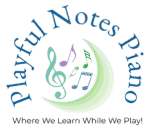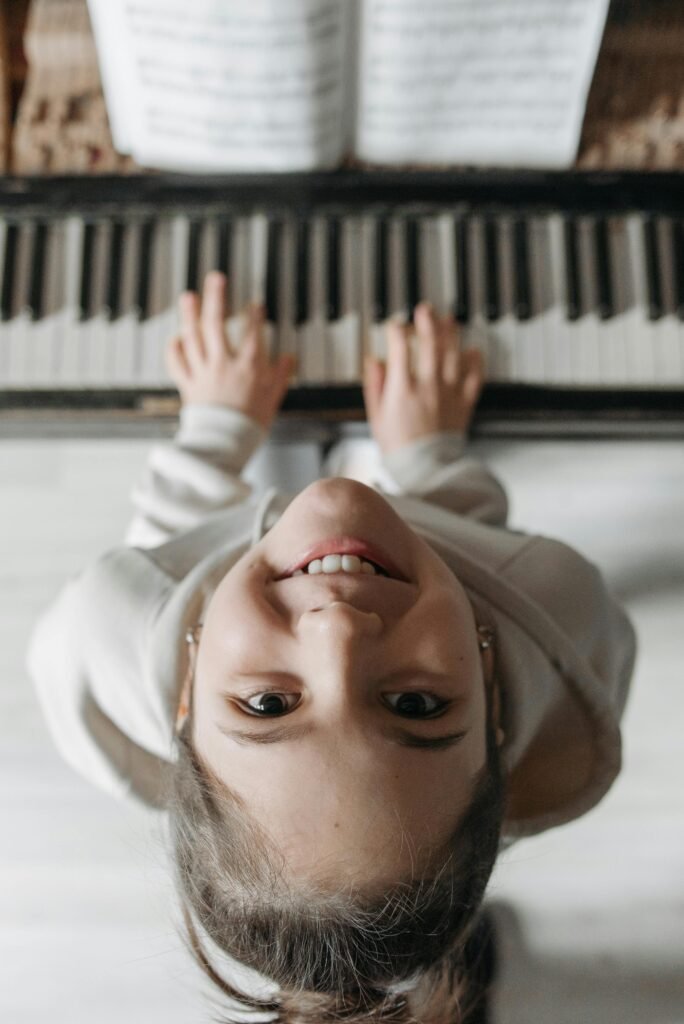


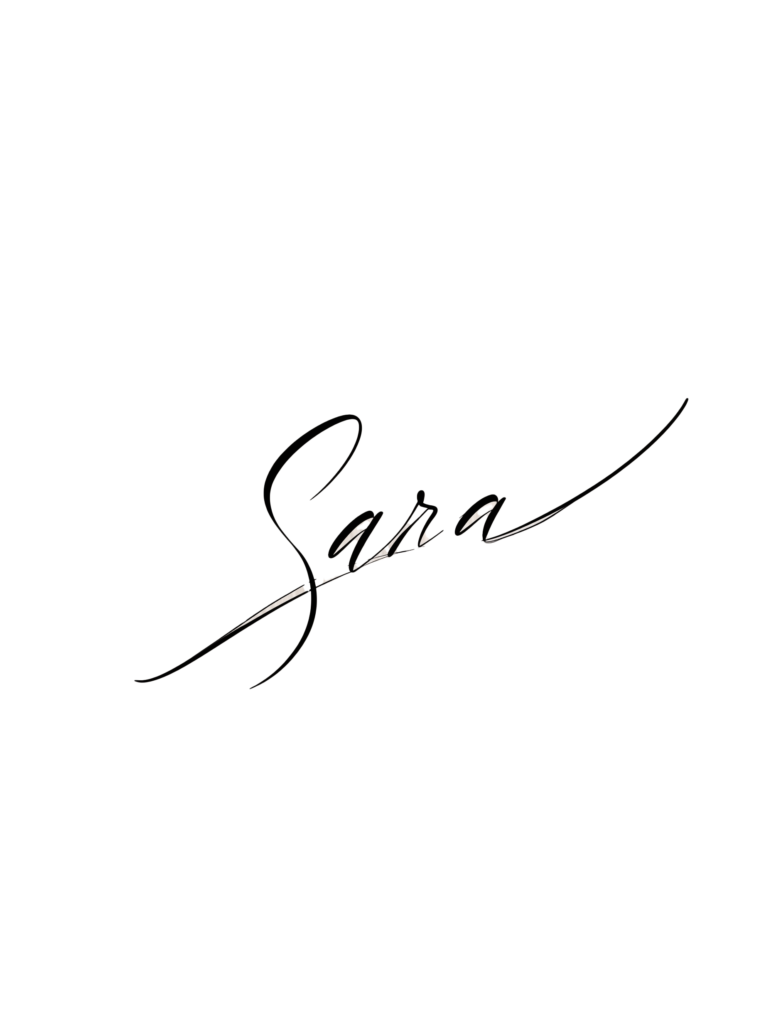
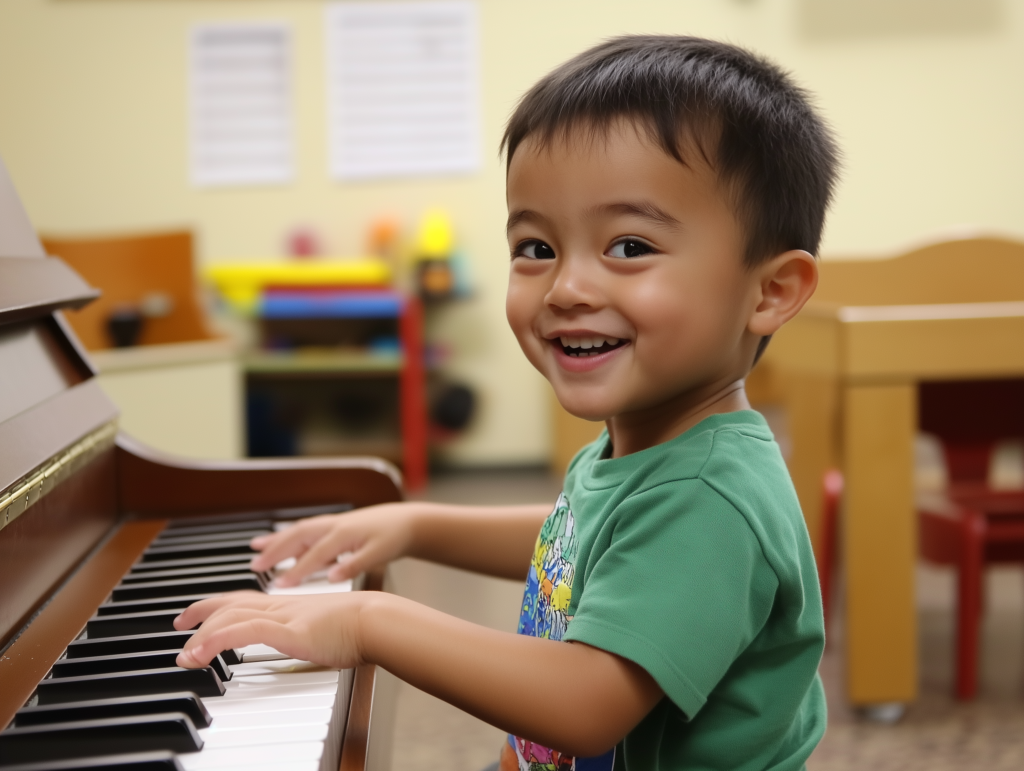
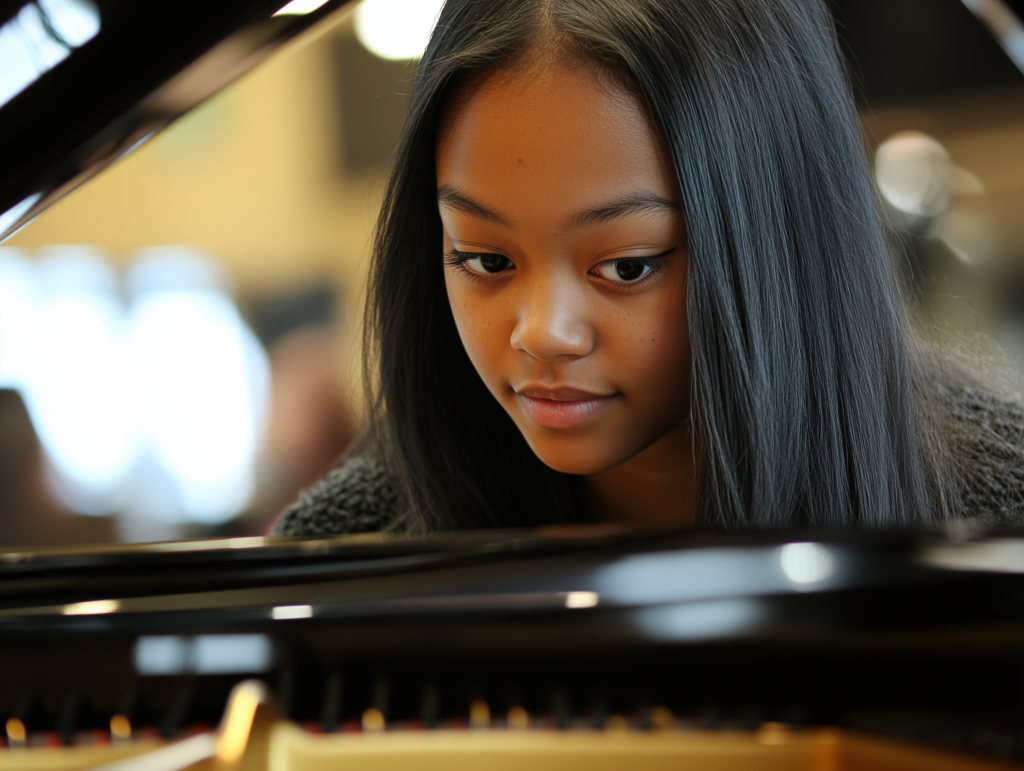
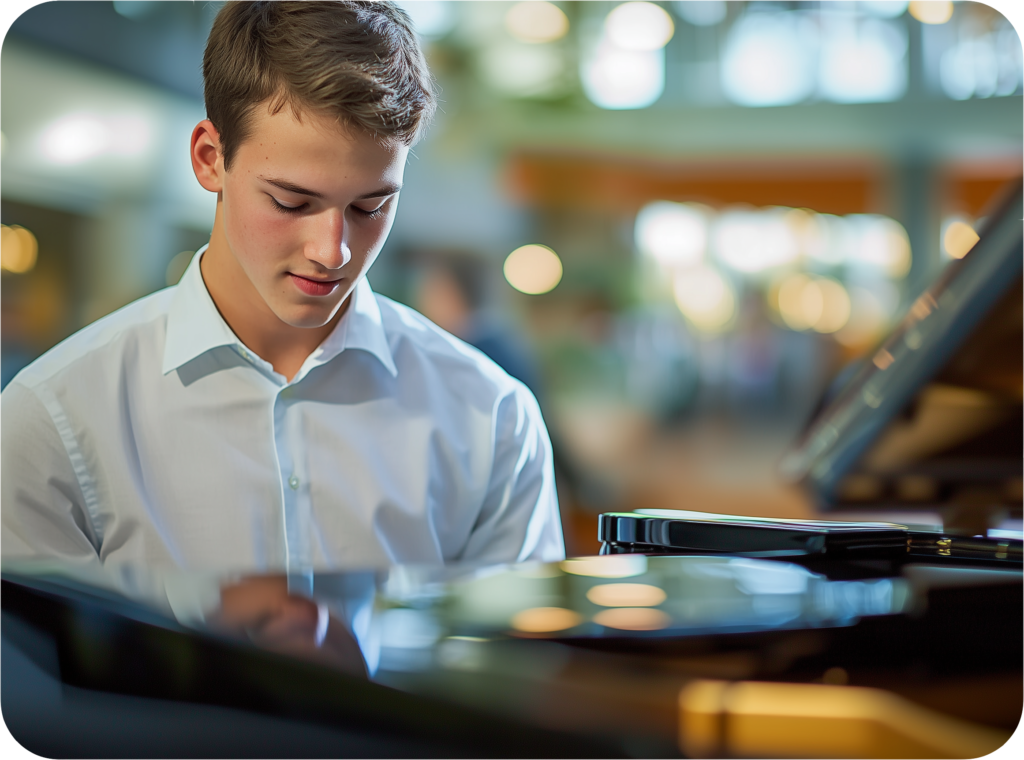

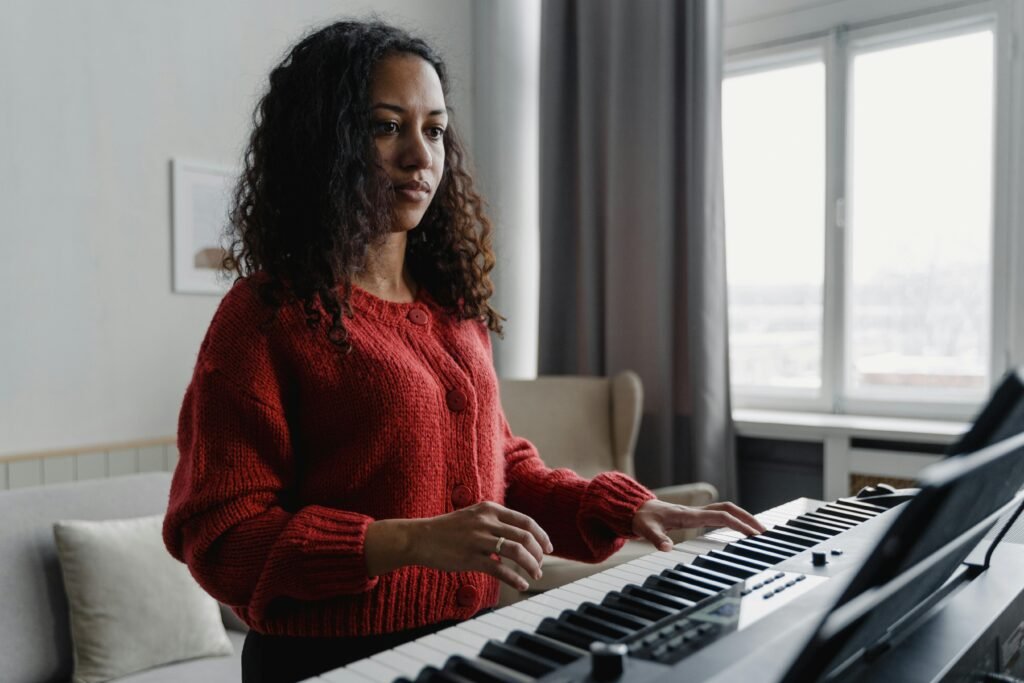

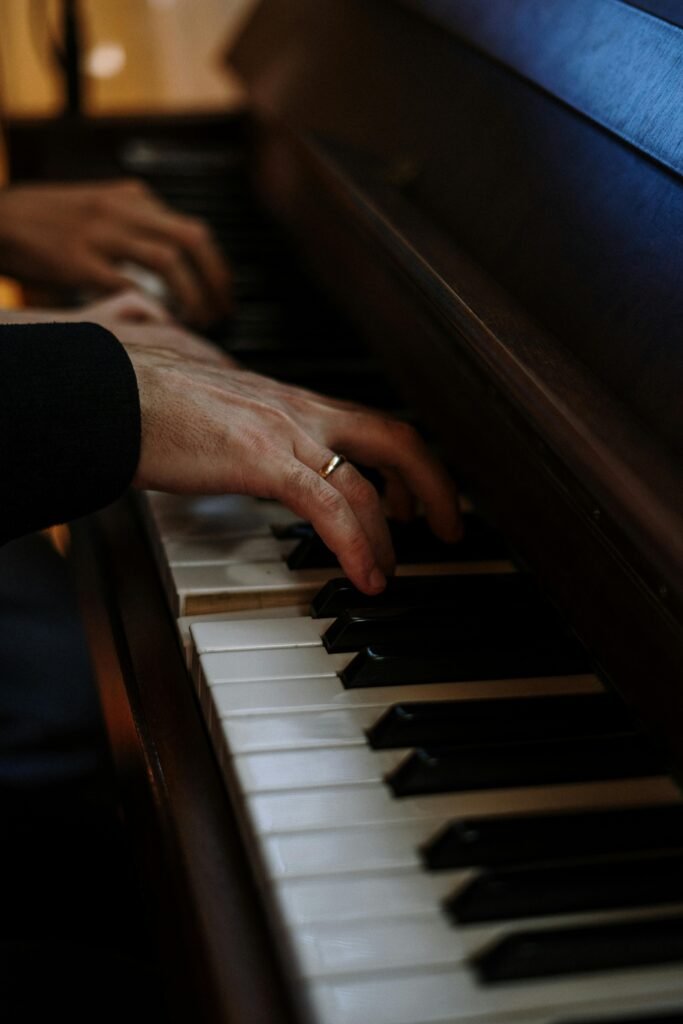
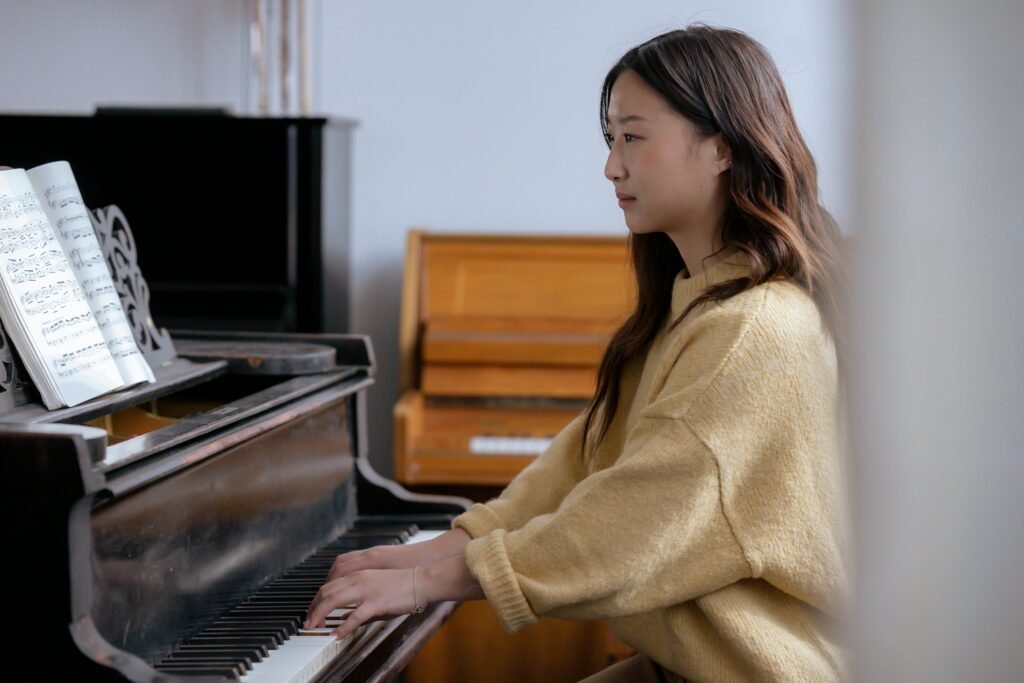
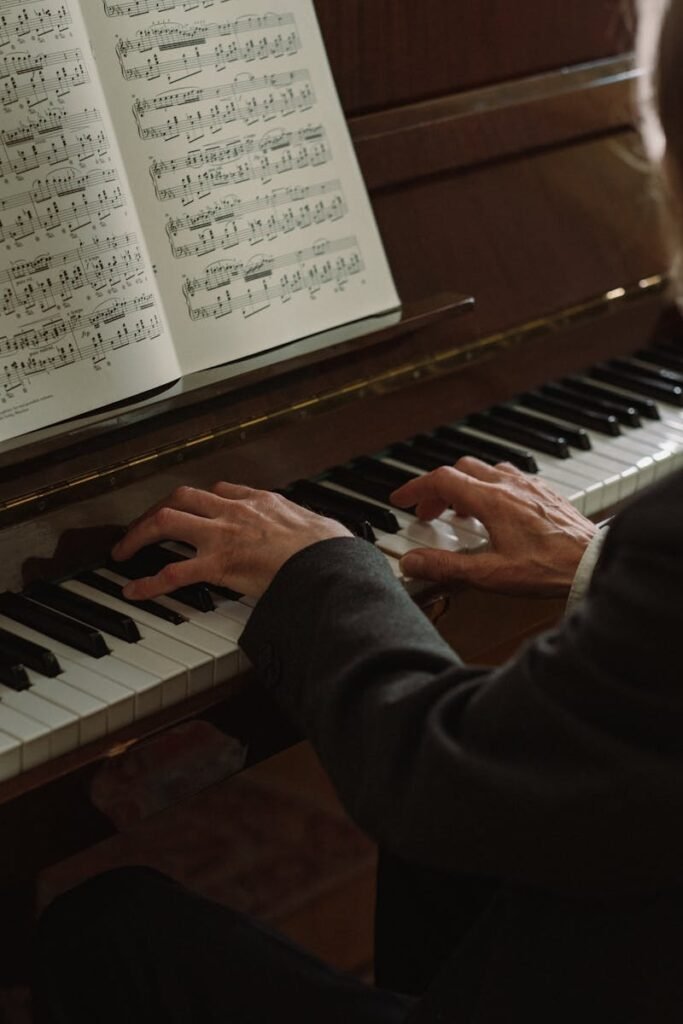
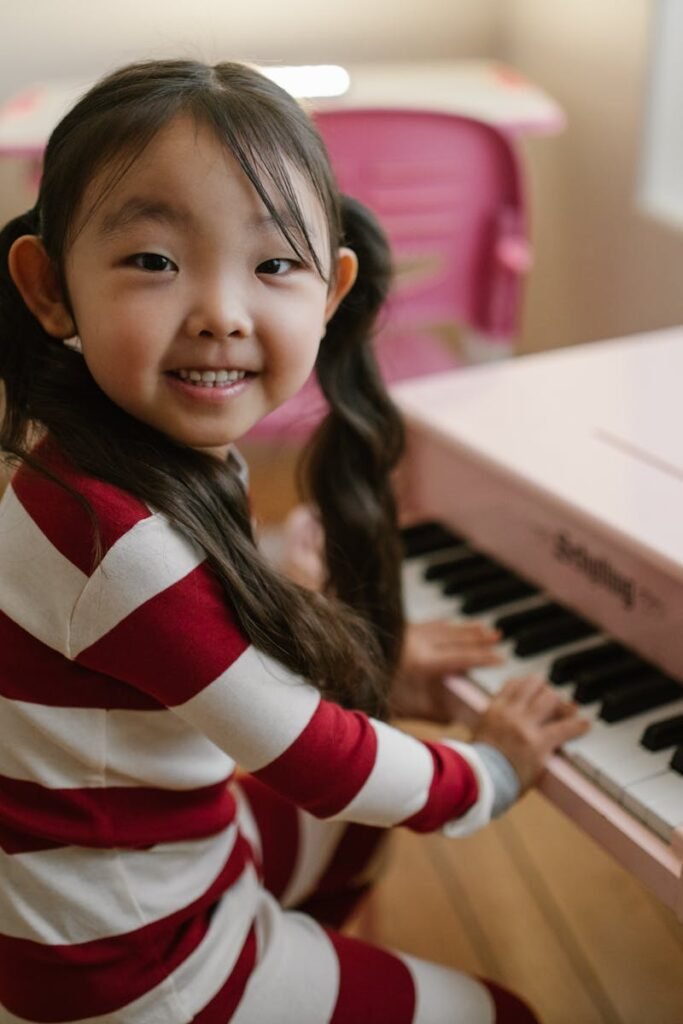
Reading Music
Reading music is a cornerstone of my piano teaching philosophy, laying the foundation for confident, creative musicianship. In my studio, students learn to decipher rhythms, read notes accurately, and connect written music to the sounds they hear.
Improvisation
Improvisation is a powerful tool that brings scales to life. By experimenting with melodic ideas and how notes work and sound together, students internalize scale patterns on a deeper level, sharpening both their ear training and technical skills. This creative approach inspires confidence and adaptability, laying a strong foundation for more advanced musical concepts and a lifelong love of piano.
Composition
Composing music unlocks a powerful form of self-expression and creativity, reinforcing the theory and technique students learn in their lessons. By experimenting with melodies and chord progressions, they gain a deeper understanding of how music works, building confidence and ownership over their craft.
Proper Technique
Technique can be challenging, but it’s key to growing into a confident pianist. I use engaging stories and games to teach proper hand shapes, posture, and movement, transforming a traditionally tedious process into something fun and stress-free. If frustration runs high, we simply pause and return with a fresh perspective.
Theory
Music theory is the backbone of musicianship, but it doesn’t have to be boring. With my extensive collection of interactive games, students learn concepts like intervals, chords, and key signatures in a hands-on, engaging way. By weaving play into each lesson, theory becomes memorable, meaningful, and fun to master.
Pattern Recognition
Pattern recognition is a powerful tool in learning music. By helping students identify recurring shapes, intervals, rhythms, and chord progressions, I make reading and playing music more intuitive and efficient. Recognizing patterns builds confidence, speeds up learning, and strengthens memory—giving students the skills they need to become fluent, independent musicians.
Aural (Ear) Training
Ear training opens the door to truly understanding music. Through listening exercises, interval identification, and fun sound-matching games, my students learn to recognize and reproduce what they hear with growing confidence. This deeper connection to music boosts their overall musicianship and expressive ability
Circle of Fifths
The circle of fifths is a powerful tool for mastering scales. By mapping out the relationships between key signatures, students quickly see how each scale connects, building both confidence and understanding. Integrating it into our lessons provides a strong musical foundation and expands their overall musical awareness.
Rhythm Skills
Strong rhythm skills are vital for any musician, and in my studio, we tackle timing and pulse through fun challenges, achievable goals, and playful games. By breaking down tricky patterns into engaging activities, students build steady rhythm habits that pave the way for fluid, expressive playing.
